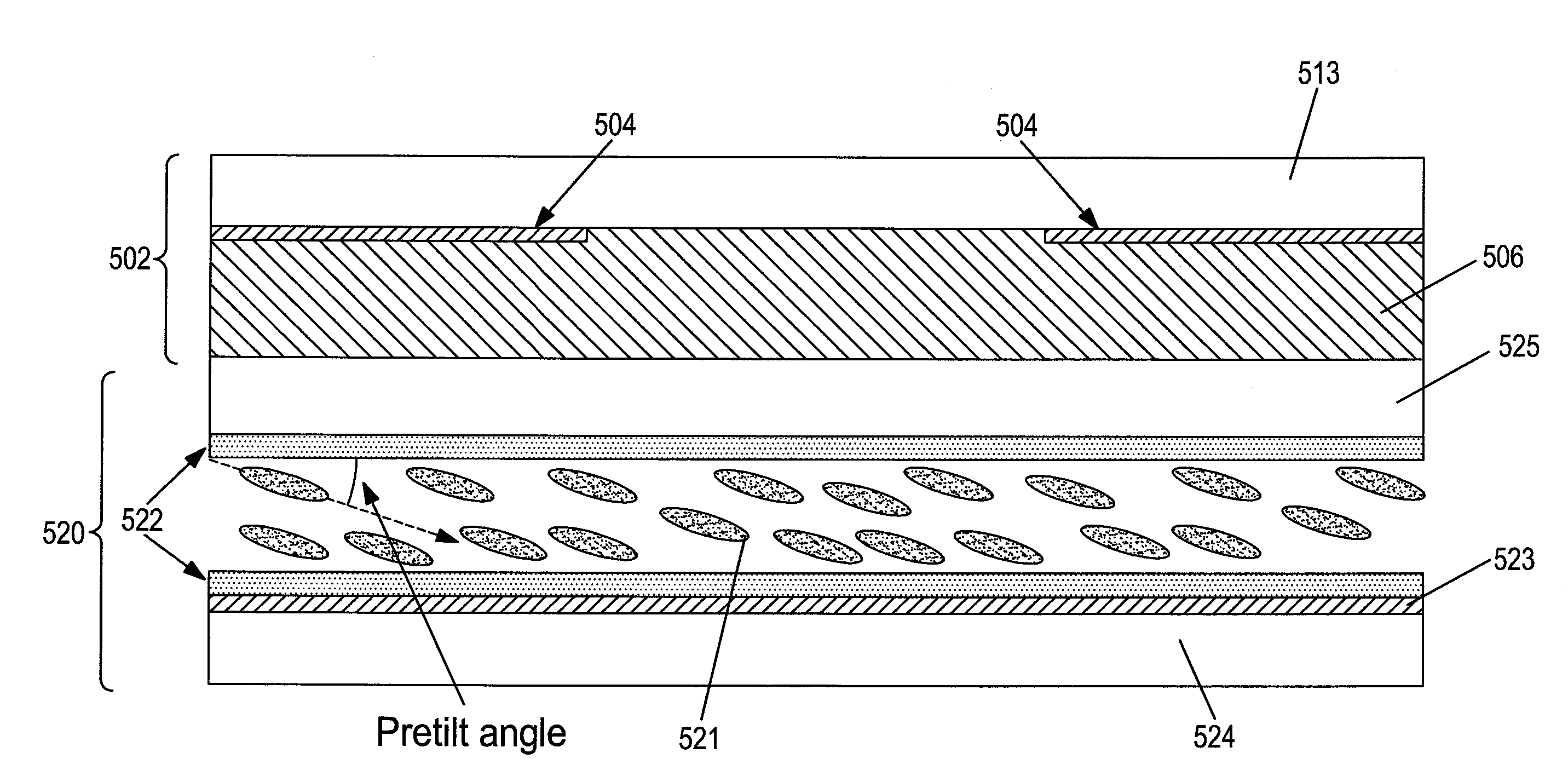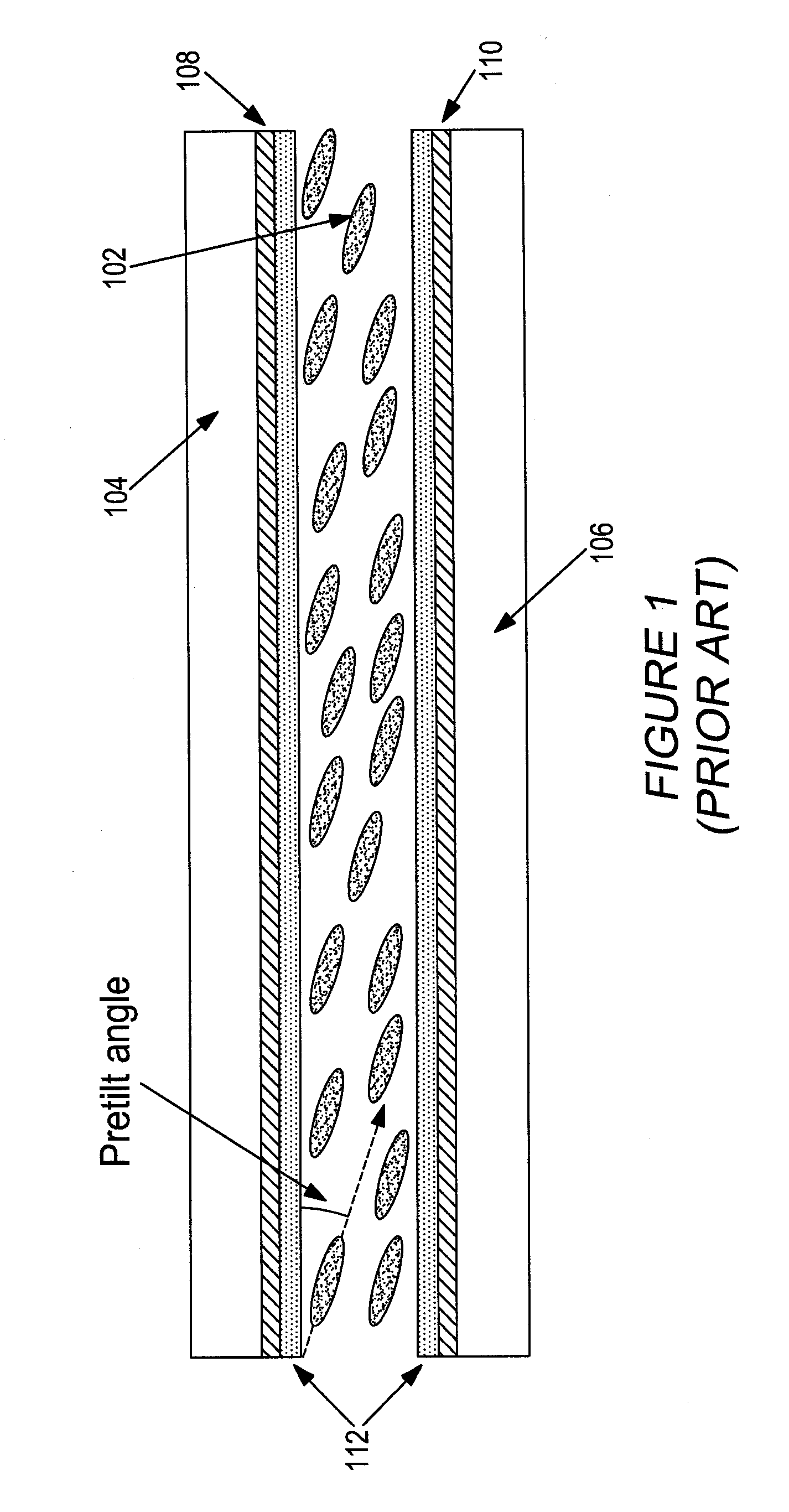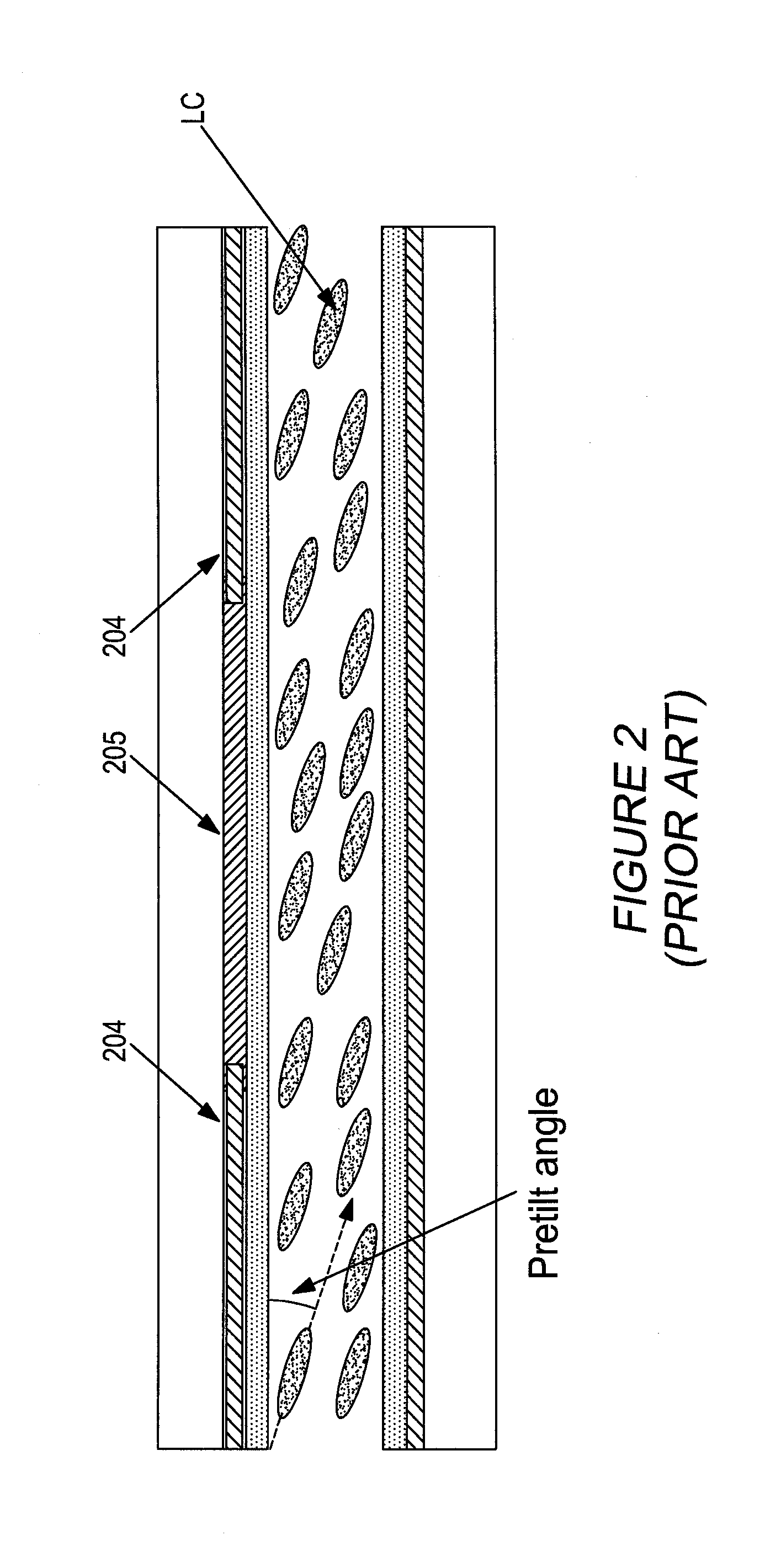Image stabilization and shifting in a liquid crystal lens
a liquid crystal lens and image stabilization technology, applied in static indicating devices, instruments, non-linear optics, etc., can solve the problems of difficult to produce the required thickness of high resistivity materials, difficult to produce lc cells with good uniformity, and the manufacturing process is typically low yield, so as to improve the effect of efficient control of the movement of the focus
- Summary
- Abstract
- Description
- Claims
- Application Information
AI Technical Summary
Benefits of technology
Problems solved by technology
Method used
Image
Examples
example
[0096]It will be appreciated that the tunable LC optical device can be fabricated using a layer by layer assembly and, preferentially, in a parallel way (many units simultaneously, referred to as “wafer level fabrication”), the final product being obtained by singulation and, optionally, joining lenses with operation axes (directors) in cross directions to focus two (both) orthogonal light polarizations.
[0097]By way of a non-limiting example, the dimensions of a variable focus flat refractive lens embodiment of the invention will be provided. It will be appreciated that dimensions can vary greatly depending on design choice and the choice of materials. The cover substrate can be made of glass with a thickness of 50 to 100 microns. The hole-patterned electrode can be made of an opaque metal such as aluminum, or it can be made of Indium Tin Oxide (ITO) which is transparent. The thickness of the electrode can be in the range of 10 to 50 nm. The frequency dependent material can be made ...
PUM
 Login to View More
Login to View More Abstract
Description
Claims
Application Information
 Login to View More
Login to View More - R&D
- Intellectual Property
- Life Sciences
- Materials
- Tech Scout
- Unparalleled Data Quality
- Higher Quality Content
- 60% Fewer Hallucinations
Browse by: Latest US Patents, China's latest patents, Technical Efficacy Thesaurus, Application Domain, Technology Topic, Popular Technical Reports.
© 2025 PatSnap. All rights reserved.Legal|Privacy policy|Modern Slavery Act Transparency Statement|Sitemap|About US| Contact US: help@patsnap.com



